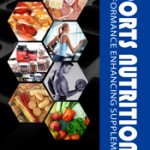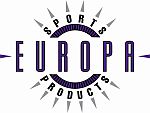Question: What simple piece of nutrition/supplement/exercise advice would you give to a fitness enthusiast who wants to lose fat/gain muscle?
My advice is this: – DO consume 5 g of creatine daily; DO consume a high-quality protein immediately post-exercise. DO consume fish or fish oil regularly. DON’T consume (or limit severely) processed carbs. DON’T make sad sorry excuses. And quit stuffin’ your face for Pete’s sake. – Jose Antonio PhD FACSM FNSCA FISSN – Sports Nutrition Insider Editor in Chief
Words of Wisdom From The Experts
Focus on protein at every meal (poultry, lean beef, fish, eggs, dairy or even a protein shake). – Jim Stoppani PhD – Muscle & Fitness
Eat foods that don’t have a label (fresh meats, fresh vegetables, fresh fruits) every 3 hours! – Juan Carlos Santana MEd FNSCA CSCS*D – Institute of Human Performance
5 fish meals/week!! Remember all fish count; both fish protein and marine fats are uniquely able to enhance body composition. – Susan M. Kleiner PhD RD FACN CNS FISSN – author of Power Eating
Eat breakfast. It tells your body that you will not starve it and in turn your body will jumpstart your previously sleeping metabolism. If your body doesn’t trust that you will feed it-especially after hours of no food like when you were sleeping- it will hold on to any extra fuel (body fat!) like an old lady clutches her purse when she rides the subway! – Gunnar Peterson CSCS CPT – Beverly Hills-based Personal Trainer
Take caffeine pre-workout. Supplement with creatine. Stop eating so much sugar. Cut back on all processed carbs. And eat more protein! – Jeff Stout PhD FACSM FNSCA FISSN – University of Central Florida
Macronutrient manipulation is the best way to improve body comp. You don’t have to eliminate carbs or fat, just think about adding high quality protein to every meal/snack. Shoot for a 2:1 or 1:1 (for rapid changes) CHO:PRO ratio. – Abbie Smith PhD CSCS*D CISSN – University of North Carolina
Pay close attention to your hunger and satiety cues. When you reach for food, ask yourself if you are really hungry or if you are eating for other reasons like boredom, stress or anger. – Marie Spano MS RD CSCS FISSN
Don’t be enchanted by the evangelistic tales of things falling or rising in the blood (testosterone), muscle (protein synthesis or breakdown), or metabolism (e.g. ‘fat burning’), which often are disconnected from what you are seeking. Ask for evidence on the ACTUAL PRODUCT, for what REALLY counts: increased muscle mass and/or decreased body fat. – Anthony L. Almada MSc FISSN
Use common sense and stop the silly fad diets. It’s not about low calorie, low sugar, fat free, gluten free or any other ‘label.’ It is as simple as eating a variety of natural foods in there natural form at the right times of the day and be mindful of proper portion sizes. You have choices: an apple or a candy bar, a had full of M&M’s or almonds, fast food or home cooked, water or soda, etc. You know the answers, apply them and you will look and feel amazing. It is that simple! – Kim Lyons NASM CPT – former trainer on The Biggest Loser
Consume whey protein. Numerous studies have shown how whey protein may prevent hunger, decrease inflammation and manage insulin better. If you can’t have the supplement, increase dairy food sources in your diet. – Marta Montenegro MF MS CSCS NSCA-CPT
For nutritional supplements, before spending a lot of money avoid all the marketing hype and try to focus on the actual ingredients and the science behind them. Seek out help if you need, it. Contact the ISSN. For your diet, try to eat as “clean” as possible by decreasing your carbohydrate and saturated fat intake and by trying to “chew” most of your daily calories as opposed to “drinking” them. – Darryn Willoughby PhD FACSM FISSN CSCS CISSN – Baylor University
A new year’s tip for a leaner 2012: Reduce (or eliminate) added sugar intake, increase lean protein intake, and take advantage of the power of caffeine! – Colin Wilborn PhD FISSN CSCS ATC – University of Mary Hardin Baylor
When all else fails, reduce your intake of starchy carbohydrates, and replace with fibrous carbohydrates like fruits and vegetables with high fiber and low energy density. – Tim N. Ziegenfuss PhD FISSN CSCS
You can use the best equipment and technology to fine-tune a high-end sports car, but without fuel it simple won’t perform. To get the most out of your training, you need to consider your body a high-end sports car. I mean you wouldn’t put water into the gas tank of a race car would you? Then why put junk into your body? – David Sandler MS CSCS*D FNSCA FISSN – National Strength and Conditioning Association
If you fail to plan, you plan to fail. Preparing healthy meals in advance and keeping supplements organized is essential to staying on track and achieving your fitness goals. – Rehan Jalali Celebrity Nutritionist
Make sure each of your meals contains a wholesome, fiber-rich carbohydrate like fruit or a small portion of whole grains for energy and a lean protein to keep you feeling satisfied and to keep your muscles strong. Round out your meals with vegetables for fiber, nutrients and healing antioxidants for your exercised muscles. – The Nutrition Twins: Lyssie Lakatos RD LD CDN CFT and Tammy Lakatos Shames RD LD CDN CFT
I would recommend a high protein diet. I took breads out of my diet in the last three weeks and lost five pounds. I even eat chicken for breakfast with tea. Have protein bars for snacks too. My mind also just feels better and more energetic for working out. – Suzy Favor Hamilton 3-time Olympian
Avoid processed, refined white flour, white sugar carbs. And don’t be afraid to eat fat! – Mona Rosene MS RD
There is no way to out-supplement a poor diet, nail your nutrition first. Dump the processed ‘foods’ and stick with lean proteins and veggies. – Michelle Adams MPH CISSN CSCS IFBB Pro
Measure your current body composition, set a specific goal composition, calculate the difference (in lean mass and body weight), then plan your training and diet accordingly. Focus on nourishment to build the body you want, instead of malnourishment to destroy the body you don’t – Damon Hayhow CISSN
Don’t be afraid to eat less than what you think that you need! – Douglas Kalman PhD RD FISSN FACN – Miami Research Associates
Protein throughout the day with the most important times being breakfast and post exercise (at least 20 grams). If you include at least one significant protein source with all meals and snacks you are on the right track as protein needs are increased relative to exercise effort – Rob Wildman PhD RD LD FISSN
Try to eat every 3-4hrs. In each meal try to include each of these three things: a lean protein (like chicken or fish, etc.), a fibrous carb (fruits and/or veggies), and a healthy fat (like avocado, nuts, etc.) – Nick Tumminello CPT CSCC
Success is never about the food. It’s all about having the skills, tools and the environment that ensures better choices are made consistently, but also the right choices are consistently available every time. Food proximity rules; if it’s easy to get to, eventually you’ll eat it! – Paul Cribb PhD – Metabolic Precision
Most importantly, have positive mindset about working out and eating clean. Get rid of all the junk food in your house, and be consistent with weight lifting and cardio. Especially women- do not be afraid to lift a little heavier than usual! – Liza Muravyeva MS RD
Start simple. Cut foods that are highly processed, high in sugar, high in saturated fat and low in nutrients. Drink 2 liters of water before noon. If you must have a late night snack, reach for a lean protein and step away from the bowl of ice cream. STOP blaming your parents for “making you fat”. Create a DO-ABLE nutritional plan and stick to it! – Jay Dawes, PhD CSCS Texas A&M Corpus Christi
Eat more protein working up to a minimum of 0.75 grams per pound of body weight . This works to support muscle growth and keep you full longer so you shove less food into that hole below your nose. – Mike T Nelson PhD(c) CSCS MSME
Don’t just “wing it” when it comes to nutrition. Know your protein, carb and fat grams and limit your fat loss to no more than 1.5 pounds per week. – Raphael Calzadilla BA CPT ACE
There really is no substitute for a great training program and good clean, well-balanced diet. For the recreational fitness enthusiast interested in losing fat and gaining muscle, rather than looking for the ultimate quick fix that simply does not exist, focus your efforts on a strenuous training program and well-rounded diet. – Kristy Lee Wilson BS NSCA-CPT NASM-CPT PES CES
Even caloric distribution throughout the day, along with quality and balance, will positively impact body composition, glycogen storage, protein synthesis and immune system health. – Heidi Skolnik MS CDN FACSM
To enhance body composition will require time; make sure you schedule time to shop and cook. I train my client’s brain and brawn. You must have a strong positive mindset; you cannot let other people drag you down or sabotage your own fitness and health goals. In the end you control your health and well-being. – Nicole Moneer Guerrero NASM-CPT CISSN IFBB Pro
Regardless of what type of training you are doing, always eat something within 15 minutes following every training bout. Ideally, this should include carbohydrates and a high quality protein source without excess dietary fat. – Lem Taylor PhD FISSN CISSN – The University of Mary Hardin Baylor
Of all of the 20 amino acids leucine is mainly responsible for driving skeletal muscle growth (or at least turning on protein synthesis). To optimize this process consume 2-3 grams of leucine whether in supplement form (with 1.5 grams isoleucine and valine) or from high quality proteins each meal. Milk based proteins are 10 % leucine, egg is about 9 %, and meats are about 8 % leucine. This would amount to about 30 grams of high quality protein per meal for example from a milk based protein (3 grams of leucine). – Jacob M. Wilson PhD CSCS*D – University of Tampa
Eat like a caveman. Or to be PC, A cave-person. We’ve come full circle on this one. Eating wild game, fish and a variety of in-season vegetables, fruits, nuts and seeds proves to be our best bet for a lean, well-functioning body. And one more thing…SLEEP! Chronic sleep deprivation can cause weight gain by affecting hormones that control appetite as well as the way we store carbohydrates. – Gina Lombardi RDH NSCA-CPT *D – Host of Fit Nation
To transform your body, you must drink enough clean water, eat high quality REAL food 4-6 times daily and challenge your body with resistance. And then plan the next day. Consistency and planning lead to physical success. The little things done daily make ALL the difference. – Billy Beck CSCS CISSN
Don’t overcomplicate things…simply make only one small positive nutritional change at a time until that small change becomes a good habit, and then add the next small change. Over time this will work out much better than changing many things at once– (and the results will last longer too). Also, be sure to add protein to every meal that you eat! Our research has documented that this helps to promote fat loss and muscle mass gains. – Michael J. Ormsbee PhD CSCS CISSN – Florida State University
One “cheat meal” is ok, if your diet is typically on point. Don’t beat yourself up or stay too rigid. One salad doesn’t make an overweight person thin either. It’s about the long haul. – Shawn Wells MPH RD CISSN
Enhancing body composition implies maximizing lean muscle mass and reducing stored body fat. In terms of maximizing lean muscle mass, supplement with creatine monohydrate. Not only is this supplement safe and inexpensive – it WORKS. – Bill Campbell PhD CSCS FISSN
The simplest beginning is to start cutting back carbs (e.g wheat, grains, potatoes, anything ‘white’; but not so much fruits and veggies). Increase protein intake esp lean meats and egg whites. Also, whey protein creatine and caffeine (pre workout) are proven supplements to help you achieve your goals. – Ty Nordic CSCS
Pay attention to what you eat before, during and after your workouts and be sure that regardless of the goal a good bit of general advice is to eat at least 1-2g/kg of protein per day (especially when trying to lose to maintain the muscle you do have), healthy fats are wicked good for you and should be at least 30% of your macro breakdown for fat loss OR muscle gain and don’t be afraid of carbs!!! – Melissa Traynor CISSN ACSM CPT-HFS
Spend a small percentage (10%) of what you would on your fitness equipment, clothing etc and another 10% of the time you spend on your fitness endeavours on your food and food preparation. It will pay dividends over 10:1 in terms of performance and recovery in most cases. – David Driscoll MSc CSCS
If you want to lose fat and gain muscle, you need to eliminate the single nutrient that will stimulate fat storage: sugar. In a study conducted by researchers at UCONN, men who ate a high-protein, moderate-fat, zero carb diet lost significantly more fat and gained almost double muscle than men who ate more sugar and less protein. Rule of thumb: if it tastes sweet, only eat it after your workout, if at all. – Cassandra Forsythe-Pribanic PhD RD
Bump up your protein and reduce simple and extra complex carbs as much as possible- and make sure to consume some carb protein combination immediately post exercise!! – Kelly Kennedy PhD CISSN ACSM-HFI
Cook and pack your own protein-rich meals and keep “emergency snacks” such as nuts of all kinds (e.g. walnuts, almonds, etc) in your car so you never skip a meal or are tempted to hit the McD’s drive-thru! And wash every meal down with pure simple water! – Carla Sanchez NSCA-CPT IFBB Pro – Performance Ready Team
You have to just do it (i.e. nutrition and training) consistently. You need proper nutrition (including appropriate, credible supplements) and a training plan tailore to suit your goals. It must be a lifestyle not a quick fix. Quick fixes don’t work; because they are quick to come and quick to go. – Jenna Becker MS RD CISSN
Challenge your large muscle groups a couple of times a week by doing squats, throwing hay bales, or hoisting cinder blocks so that you are huffing and puffing and burning. Stay consistent, maintain good form and increase the resistance as you get fitter and stronger. – Tom Seabourne PhD CSCS
Shoot for 10 portions of fruit and vegetables daily, with most of the portions coming vegetables as sugars from fruit not helpful when aiming for weight loss. Vegetables are best juiced, steamed, lightly cooked and blended into soups, or raw; with stir-fries, roasted and casseroles thrown in for variety. Power this up with plenty of fresh or dried herbs. And how to achieve this? Add several colourful servings to EVERY meal and snack starting with breakfast. – Andrea Cullen
Adding lean protein is hands down the best way to promote muscle growth – it is the building block. Losing fat and gaining muscle at the same time is a tall order, so also adding Branched chain aminos pre workout for preserving muscle is a good plan as well. – And stay out of the Drive throughs…..;-) – Shannon Leroux Pro Figure Athlete
Track your food intake. Often after a few days of tracking the realization usually is: underestimation of overeating or overestimation of undereating. – Allison Ethier NSCA-CPT CanFitPro-PTS CISSN
My single piece of advice would be to get back to the basics. I think to often we are all trying to find the latest and greatest new things and forget about the tried and true. These include a clean, natural food diet with basic supplementation of protein, creatine monohydrate and EAAs. If it seems to good to be true, it probably is! – Lacy M. Puttuck RD CISSN CSCS
Increase your protein and vegetable intake, increase meal frequency, and decrease sugar, processed foods, and portion sizes. Three important supplements to begin taking are: a multivitamin, vitamin D, and fish oil. – Stephanie Svoboda CSCS CISSN
Change your mindset in how you view food. Every time you eat you have a choice to choose foods that provide the body with stable energy, enzymes, and nutrients to improve the efficiency of the body and decrease inflammation. Get out of a diet mindset and make your food choices with those positive principles in mind. – Amanda Carlson-Phillips MS RD CSSD – Athletes’ Performance
Make sure your resistance training program is practical (nobody gets an ideal physique by doing bicep curls while balancing on an inflatable disk) and that the weight/load and/or volume are substantial, throughout any variations, to satisfy muscle building. Supplements (i.e. whey protein, caffeine, creatine and beta-alanine) and diet are complementary to body composition enhancement as well as exercise regimen progressions. But don’t think for a minute that there is a magic pill, powder or potion that makes you exempt from eating cleaner and working harder! – Anna Lepeley MS PhD(C) CSCS CISSN
Muscles lack the necessary enzymes to use alcohol as fuel. It negatively affects reaction time, hand-eye coordination, balance, thermoregulation, fluid balance, glycogen conversion and muscle growth. Alcohol decreases strength, power, speed, muscular endurance and cardiovascular fitness. For these reasons, the healthiest alternative is abstinence. – Robert Taylor Jr SCCC CSCS*D CES NSCA-CPT*D CSES
Everyone wants a simple explanation as to how they can gain muscle and lose fat. The reality is that it’s a difficult process with no easy way from point A to point B. The best advice I can give you is that patience, dedication, and hard work are by far the key ingredients for changing body composition. The worst plan executed with the best work ethic is way better than the best plan executed with poor work ethic. – Layne Norton PhD IFPA and NGA Natural Pro Bodybuilder
Pick a goal, devise a system to reach that goal, and work toward it with both determination and patience. The opposite of training is beating the crap out of yourself every workout, with no goal beyond pain tolerance and bragging rights. It makes no more sense than the old advice to eat a low-fat diet and walk around the block a few times. Training is in the middle of those extremes: hard work, but with a plan and a purpose. – Lou Schuler
Success is a result of consistently doing the right thing. The client or athlete that fails to be successful is the one that simply will not adhere to what we know works. Their world is filled with excuses, whining about their lack of progress, yet they never realize that the blame for their failure rests solely on their shoulders. – Mark Myhal PhD
Have a whey protein shake preferrably an organic kind like warrior whey to ensure highest quality nutrients, about 30 min pre-workout with about 20-30 grams with water or almond milk and ice and post-workout when hunger strikes within 30 min to an hour about 30 grams with a little fruit like berries, a little fat like almond butter, and organic greens like greens plus for vitamins, minerals and antioxidants. – Yarixa Ferrao
Take advantage of your post-exercise nutritional window–consume 1/4 gram/lb of whey protein as soon as possible following your workout. It’s perhaps the easiest thing you can do to maximize muscle protein synthesis. – Brad Schoenfeld MSc CSCS – author of Look Great Naked
Set performance-related exercise (or sports) goals. What you get out of workouts is proportional to what you put into them. Human beings are naturally performance oriented, and setting performance goals provides the motivation to put a lot into one’s training. – Matt Fitzgerald, CISSN, author of Racing Weight: How to Get Lean for Peak Performance
A ship that’s overloaded and brought about far too sharply will likely capsize; so, too, will a person fail at achieving their goal if they attempt to make too many changes at once. Thus, be in it for the long-haul. Make one change, let your body respond and then begin to plateau before adding a second change. In this regard, the best and most simple way I’ve found to effectively change a person’s body and energy levels is to first have them change their breakfast. If you can control blood glucose from the moment you wake up, a large part of the battle has already been won. – Chris Lockwood, PhD, CSCS
Eat leafy greens at every meal, they contain omega-3 fats too! Think spinach & eggs with salsa for breakfast, a handful of mesclun greens tossed into a smoothie mid morning, a big composed salad of tuna & beans on a bed of arugula for lunch, romaine lettuce wraps filled with Greek yogurt, shredded carrots & olives midday, and steamed kale alongside a baked sweet potato & lean grass-fed beef or steamed fish for dinner. Power meals don’t come in containers. – Elizabeth Brown, MS, RD, CPT, CDE Certified Holistic Chef
Go for the “White-Out” approach to diet by eliminating the white’s: sugar, bread, rice, and pasta. Skip sugary soft drinks and fruit juices. Instead, get your carbs from fibrous veggies and some fruit. And by all means eat more protein with your meals! Mixing protein with carbs means less of an insulin spike and less fat storage — good news for your abs! – Rick Collins Esq FISSN
Exercise regularly; eat diet high in protein from lean meats and fish and supplement with fish oil. Supplement your diet with inexpensive whey protein (20 to 30 grams minimum) and simple creatine ( 3 to 5 grams a day). Cut back on carbs and use only complex carbs in diet. – Marv Heuer MD
Being able to gain fat is NOT a disease or a problem. It is actually evolution at its finest. Fat is the body’s way of ensuring its chances of survival during times of food scarcity. Once you accept that fact and learn to work with it, you… will find that losing excess fat and gaining muscle is not impossible. Remember that breakfast sets the “tone” for your metabolism for the rest of the day. So don’t skip it. Remember that your body does the majority of its muscle repair during rest, so stock up on some good protein before bedtime. And listen listen listen to your body as the day goes by. And don’t force yourself to shed off an enormous amount of body fat in a short amount of time. Not only will the results be short lived, you will lose muscle meanwhile. And my biggest advice to prevent fat loss problems in the future; don’t get fat in the first place ! – Josephine Dalton, aka ‘Trainer Jo.’ ACSM-NASM-APEX certified.
Make protein your number one nutrient source. Cut back or eliminate carbohydrates and focus on solid protein sources such as meat, fish and whole eggs and good fats such as avocados, and fish, olive and macadamia but oils. Don’t skip meals and make sure the first thing you do when you get out of bed in the morning is consume at least 50 grams of protein. – John Romano – VPX Sports
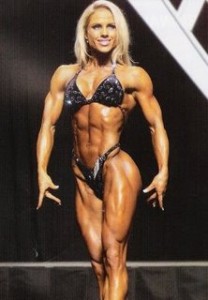 SNI: How would you describe the state of female bodybuilding today? Would you want your daughter to emulate the physiques of today?
SNI: How would you describe the state of female bodybuilding today? Would you want your daughter to emulate the physiques of today?

 BIO – Darryn Willoughby, Ph.D., FISSN holds BS and MEd degrees in Exercise Science from Tarleton State University and a PhD in Neuromuscular Physiology and Biochemistry with a sub-emphasis in Nutritional Biochemistry from Texas A&M University. He is a Fellow of the American College of Sports Medicine and International Society of Sport Nutrition (ISSN). He is also the current President of the International Society of Sports Nutrition, and is a Certified Strength and Conditioning Specialist from the National Strength and Conditioning Association and a certified exercise and sport nutritionist from the ISSN. Dr. Willoughby is an internationally recognized scholar and one of the top leaders in the field where his primary research focuses on the molecular mechanisms regulating muscle hypertrophy and atrophy and the effectiveness and efficacy of nutritional supplements in helping to support muscle hypertrophy, attenuate atrophy, and improve exercise and sport performance. He is well published in scientific research journals such as the Journal of Strength and Conditioning Research, Medicine and Science in Sports and Exercise, Journal of Sport Science and Medicine, and the International Journal of Sports Medicine. Dr. Willoughby gives invited presentations at numerous professional conferences regarding sport performance and muscle adaptation to training and nutritional supplementation.
BIO – Darryn Willoughby, Ph.D., FISSN holds BS and MEd degrees in Exercise Science from Tarleton State University and a PhD in Neuromuscular Physiology and Biochemistry with a sub-emphasis in Nutritional Biochemistry from Texas A&M University. He is a Fellow of the American College of Sports Medicine and International Society of Sport Nutrition (ISSN). He is also the current President of the International Society of Sports Nutrition, and is a Certified Strength and Conditioning Specialist from the National Strength and Conditioning Association and a certified exercise and sport nutritionist from the ISSN. Dr. Willoughby is an internationally recognized scholar and one of the top leaders in the field where his primary research focuses on the molecular mechanisms regulating muscle hypertrophy and atrophy and the effectiveness and efficacy of nutritional supplements in helping to support muscle hypertrophy, attenuate atrophy, and improve exercise and sport performance. He is well published in scientific research journals such as the Journal of Strength and Conditioning Research, Medicine and Science in Sports and Exercise, Journal of Sport Science and Medicine, and the International Journal of Sports Medicine. Dr. Willoughby gives invited presentations at numerous professional conferences regarding sport performance and muscle adaptation to training and nutritional supplementation.

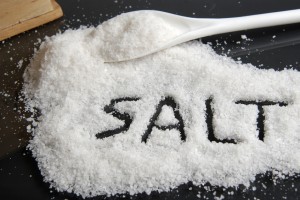

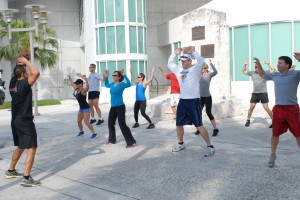
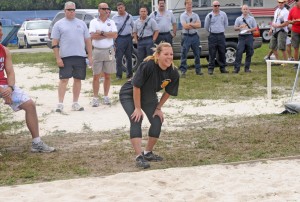
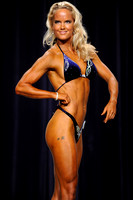
 I’d say increase protein intake while decreasing intake of processed carbohydrates (cereal, breads, baked goods, wheat products, etc). The food journals I review from clients consistently show very low protein intake, and very high intake of the processed carbohydrates mentioned. Not surprisingly, he clients recording this type of intake are, initially, over-fat, out of energy, with less than stellar blood work. This strategy works well for several reasons: 1. increasing protein intake helps create a more efficient metabolism (via the higher thermic effect of protein), in addition to building a stronger immune system. 2. Blood sugar levels are controlled far better when processed carbohydrates are reduced, and controlled blood sugar levels allow your body to begin the fat-loss process.
I’d say increase protein intake while decreasing intake of processed carbohydrates (cereal, breads, baked goods, wheat products, etc). The food journals I review from clients consistently show very low protein intake, and very high intake of the processed carbohydrates mentioned. Not surprisingly, he clients recording this type of intake are, initially, over-fat, out of energy, with less than stellar blood work. This strategy works well for several reasons: 1. increasing protein intake helps create a more efficient metabolism (via the higher thermic effect of protein), in addition to building a stronger immune system. 2. Blood sugar levels are controlled far better when processed carbohydrates are reduced, and controlled blood sugar levels allow your body to begin the fat-loss process.

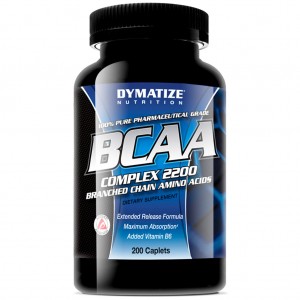
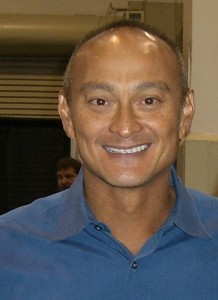
 By: Jose Antonio PhD.
By: Jose Antonio PhD.